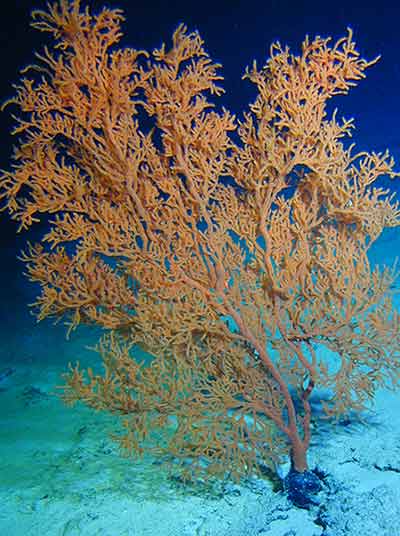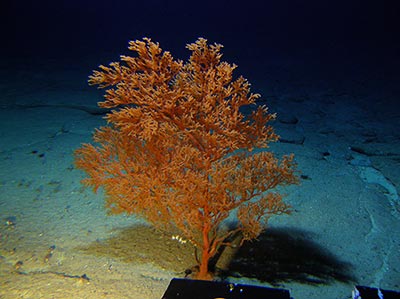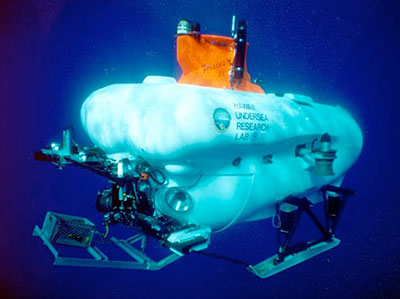Scientists Describe New Species of Black Coral
Scientists described and named a new species of deep-water black coral found at depths of 1,000-1,600 feet throughout the Hawaiian Islands, including in the protected waters of Papahānaumokuākea Marine National Monument.
The coral was previously misidentified as a species from the Mediterranean Sea, but was determined to be distinct based on a comparison of specimens from Hawaiʻi and the Mediterranean, in which scientists saw substantial morphological differences. As a result, they identified the Hawaiian form as another species, giving it the new name of Leiopathes annosa, which is derived from the Latin name ‘annosa’ meaning long-lived.
Much like terrestrial trees, deep-water corals like L. annosa form growth rings that can be used to determine their age. Previous studies of the Hawaiian species determined that it can live more than 4,000 years, making it the longest-lived marine organism known to date.
Specimens were collected by the Hawaiʻi Undersea Research Lab (HURL) from the Pisces research submersible, and were deposited in the National Museum of Natural History in Washington D.C. and the Bishop Museum in Honolulu, where they will be available for future studies.
The article, “Description of a new species of Leiopathes (Antipatharia: Leiopathidae) from the Hawaiian Islands,” was authored by PMNM Research Specialist Daniel Wagner, Ph.D. and Dennis Opresko from the Smithsonian Institution's National Museum of Natural History, and can be viewed online at http://www.mapress.com/zootaxa/2015/f/zt03974p289.pdf.
Read the press release.
See video



